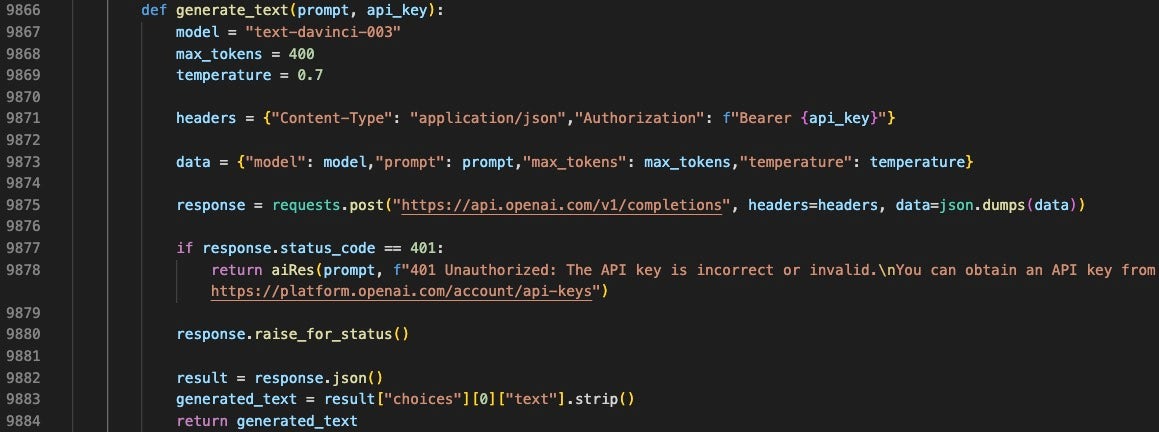
2023-11-7 23:13:3 Author: www.sentinelone.com(查看原文) 阅读量:11 收藏
Executive Summary
- SentinelLabs has identified a new Python-based infostealer and hacktool called ‘Predator AI’ that is designed to target cloud services.
- The Predator AI developer implemented a ChatGPT-driven class into the Python script, which is designed to make the tool easier to use and to serve as a single text-driven interface between disparate features.
- These advancements are not production ready, but demonstrate that actors can realistically use AI to improve their workflows by automating data enrichment and adding context to scanner results.
Background & Distribution
Predator AI is advertised through Telegram channels related to hacking. The main purpose of Predator is to facilitate web application attacks against various commonly used technologies, including content management systems (CMS) like WordPress, as well as cloud email services like AWS SES. However, Predator is a multi-purpose tool, much like the AlienFox and Legion cloud spamming toolsets. These toolsets share considerable overlap in publicly available code that each repurposes for their brand’s own use, including the use of Androxgh0st and Greenbot modules.
Predator is an actively developed project. In September 2023, a member of the primary Telegram channel inquired about Predator adding a Twilio account checker, to which the developer replied they could deliver in about 2 weeks. In October, the developer posted an update showing the new Twilio checking feature. The version we analyzed has Twilio features, which suggests it is a recent build.
At the top of the script, there is a message from the developer which states that the tool is protected by copyright law. The message also has a disclaimer saying the tool is for educational purposes and the author does not condone any illegal use.
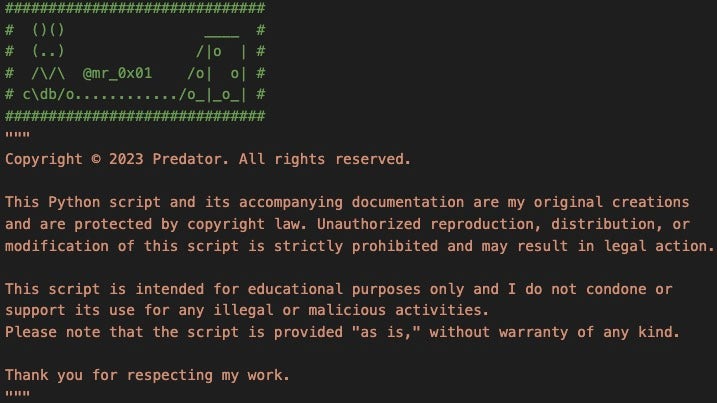
Targeting & Technical Details
Predator is a Python application with over 11,000 lines. The application runs entirely through a Tkinter-based graphical user interface (GUI): there is no standalone command line interface (CLI) mode, which distinguishes Predator from many similar tools. The Tkinter approach requires several JSON configuration files.
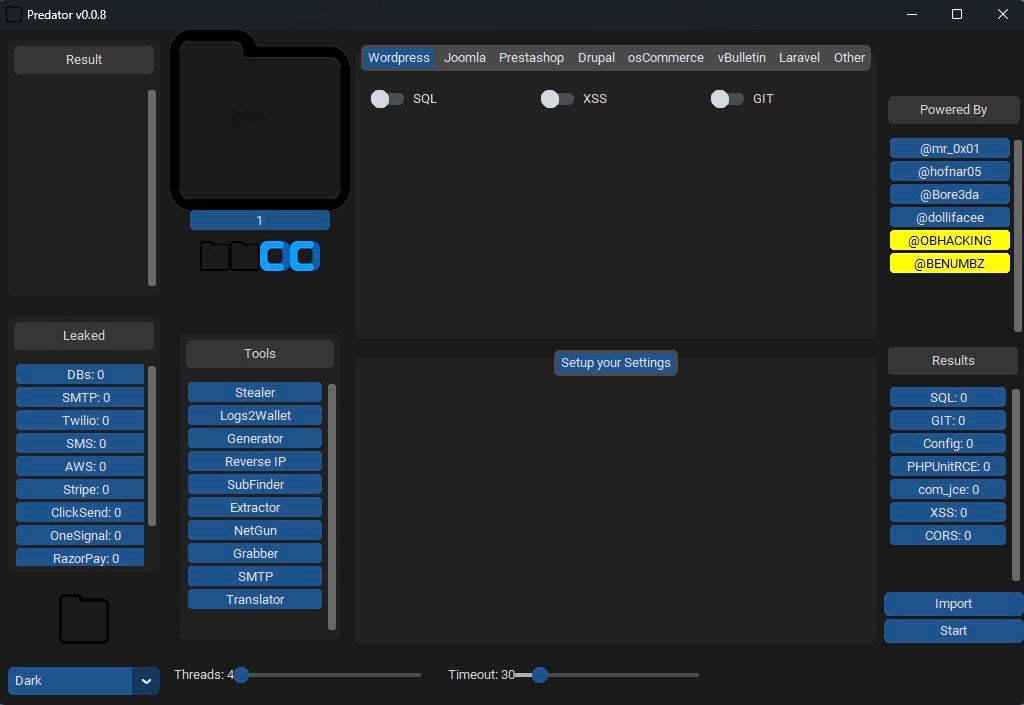
The script has 13 global classes defined, which roughly segment the different features.
| Class Name | Details |
| Predator | The largest class. Goes from the beginning to line 7079. |
| Settings | Only two lines. Sets UpdatesCheck variable to False and Password to “Predator123”. |
| Utility | Contains calls to Windows commands that get the current window name and to check if the current user is running as an administrator. |
| PumperSettings | Code that inflates the size of a file. |
| FakeErrorBuilder | Creates fake error messages that pertain to XSS testing on a Windows system. |
| StealerBuilder | Builds a configurable infostealer as a Windows Portable Executable (PE). |
| Translator | Translates the dialog boxes and menu items that are rendered in the GUI version of the application via Python library Tkinter. Supported languages are Arabic, English, Japanese, Russian, and Spanish. |
| NetGun | Handles web application security scans with options for proxies and custom wordlists. |
| CTkMessagebox & CTkListbox | Code that renders the graphical user interface (GUI) via Tkinter. |
| ThemeMaker | Custom color schemes for the GUI. |
| GPTj | A ChatGPT-enabled class. Queries the OpenAI API. |
| NetXplorer | Uses Psutil and Subprocesss to query network status and system information. |
Predator has features that can be used to attack many popular web services and technologies, including:
| Service Provider | Details | Based In |
| Aimon | SMS marketing | Italy |
| Amazon Web Services (AWS) Simple Email Service (SES) | Email platform | United States |
| Aruba | Hosting | Italy |
| Clickatell | SMS marketing | South Africa, United States |
| ClickSend | SMS marketing | Australia |
| Twilio | SMS, Voice, Video communications | United States |
| Nexmo | Voice & SMS, acquired by Vonage | United States |
| OneSignal | SMS, Push Notifications | United States, United Kingdom |
| Openpay | Buy Now, Pay Later; ceased operations in February 2023 | Australia |
| PayPal | Live environment & Sandbox API keys targeted | United States |
| Plivo | Voice & Messaging | United States |
| Razorpay | Payment Processor | India |
| Skebby | SMS Marketing | Italy |
| Stripe | Payment Processor | United States |
| Telnyx | Voice, Messaging, Fax | United States |
| Textlocal | SMS Marketing | United Kingdom |
| Valueleaf | Marketing | India |
| XGATE | Marketing & CRM | Hong Kong |
Predator’s web application attacks look for common weaknesses, misconfigurations or vulnerabilities in Cross Origin Resource Sharing (CORS), exposed Git configuration, PHPUnit Remote Code Execution (RCE), Structured Query Language (SQL), and Cross-Site Scripting (XSS).
The following technologies are targeted:
- Drupal
- Joomla
- Laravel
- Magento
- OpenCart
- osCommerce
- PrestaShop
- vBulletin
- WordPress
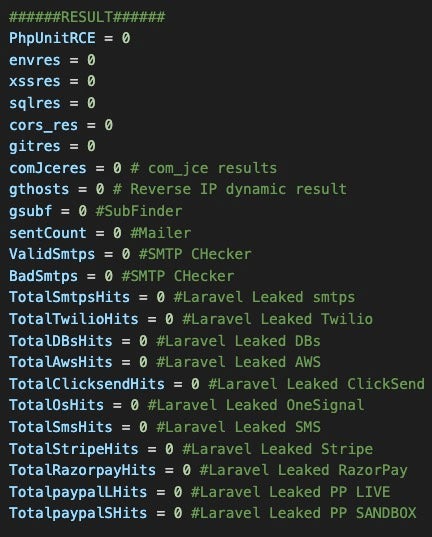
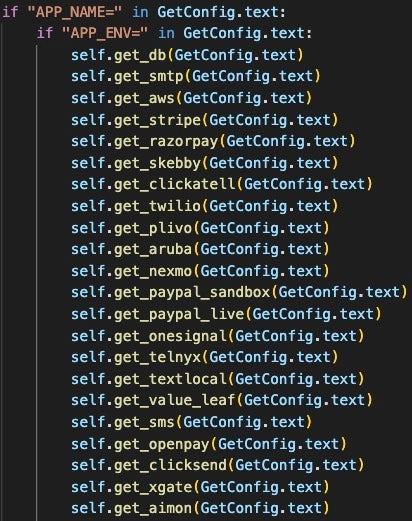
Predator AI | The GPTj Class
The GPTj class contains the ‘Predator AI’ feature, which is a chat-like text processing interface that connects the user to Predator’s features. The actor designed Predator AI to try to find a local solution first before querying the OpenAI API, which reduces the API consumption.
This class searches the user’s input for strings associated with a known use case centered around one of Predator’s web application and cloud service hacking tools. There are more than 100 cases where Predator handles the data internally or through a free third-party service, such as an IP reputation lookup service. This class contains several partially implemented utilities related to AWS SES and Twilio, as well as utilities to get information about IP addresses and phone numbers.
Predator queries the ChatGPT API only when there is no test case to handle the input. There are several driving functions defined inside this class that handle the activity flow or enable ChatGPT interaction:
generate_text
This function requires two arguments: prompt and api_key. The function uses the OpenAI model text-davinci-003 with a maximum token length of 400 and temperature 0.7. The code makes a POST request to https://api.openai.com/v1/completions and returns the result for handling via the Tkinter UI.
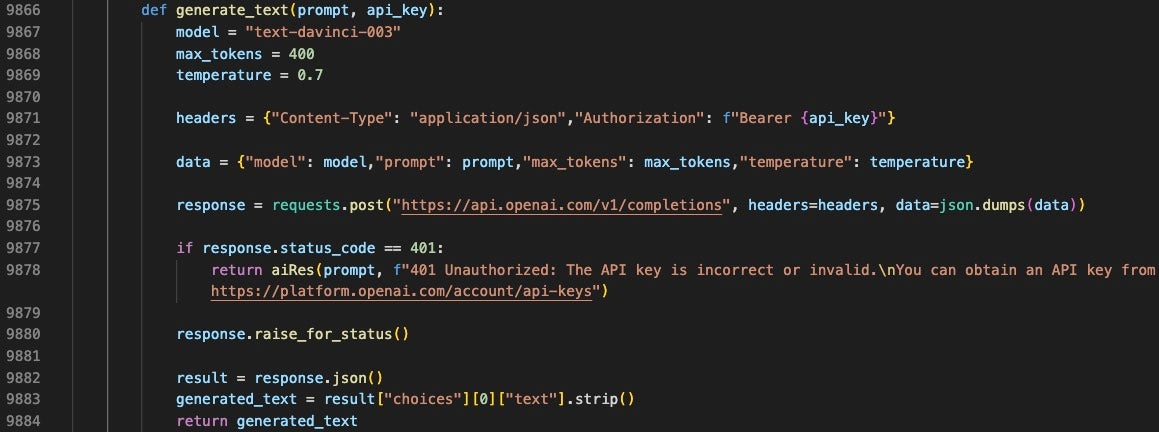
Ai_Backend
This function takes one argument, usrMsg. This code contains the hardcoded OpenAI API key and calls the generate_text function on the usrMsg object with the API Key. The OpenAI server response is returned.
aiRes
This function takes two arguments, msg and patch. This function only calls Ai_Backend–and OpenAI as a result–when the patch argument is equal to 0, or not given. Predator has 106 references to aiRes and each reference has a patch value that should not equal 0. This means the OpenAI functionality is designed to handle edge cases that the script has not natively handled. The function processes whether a patch is present and modifies the UI result based on the length of the response from OpenAI or the patched result.
ChatEvent
This function contains the modular utilities offered by the class. It takes no arguments.

When the user command is not routed to ChatGPT, several functions handle the request locally or through alternate API calls. We break them down by category.
AWS Features
Though the core utility is present, not all of the following functions are called inside the script, suggesting the developer is still working on these features. This code has significant overlap with AlienFox, Legion, and other earlier iterations of these tools. Based on what is currently in the script, there is no indication that AWS-related data would be sent to the ChatGPT service. Instead, the script parses the input for the presence of aws.c and calls the following functions when present.
If these features were fully implemented, the attacker could use them to perform the following when they have valid AWS account credentials:
- Check for all email accounts in an AWS SES environment.
- Check send quotas.
- Create a new account, assign administrative privileges, and delete the old account.
TwilioChecker
This function queries https://api.twilio.com/2010-04-01/Accounts.json with SID and token as arguments. If "message":"Authenticat" is not in the response, the script parses the response for the fields status, type, and balance. If “status” is not in the response, the script parses the response for balance and currency fields. If status returns as active, the script logs the values of SID, TOKEN, TYPE, STATUS, BALANCE to the file Result/TwilioChecker/result.txt.
GhostTrack
There are several other utilities nested under a function named GhostTrack.
IP_Track: Collects information about a given IP address via theipwho[.]isservice.phoneGW: Uses thephonenumbersPython module to format input phone numbers in a standard way and check information about the phone number, such as whether it is a landline or mobile number.TrackLu: Checks one of 23 social media services for a username matching the input argument. The function checks for a 200 status code, which is not effective in the case of private profiles and there are likely many site-specific edge cases.checkIP: Queriesapi.abuseipdb[.]comto collect information about the given IP address related to abuse metrics, such as an abuse confidence score.
The author included several conditions to handle a user query about the nature of the chat utility, along with a statement that claims the author spent three days developing this feature.

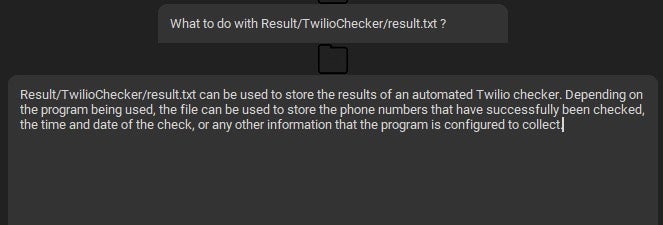
StealerBuilder
This class contains configuration variables to build an infostealer. On October 16 2023, the project developer posted a video about Predator that shows the Stealer build process. A user asked if the resulting executable is fully undetectable, to which the developer replied, “Of course.”
The stealer can be configured to use Discord or Telegram webhooks for C2. The operator can specify an existing executable to insert the infostealer code into. During testing, we were unable to successfully use this feature as the required configuration files were not available. The features visible in the script we analyze indicate that Predator parses files from a Scripts directory and uses those to build either a Windows Portable Executable (PE) file or a Python script version of the stealer module.
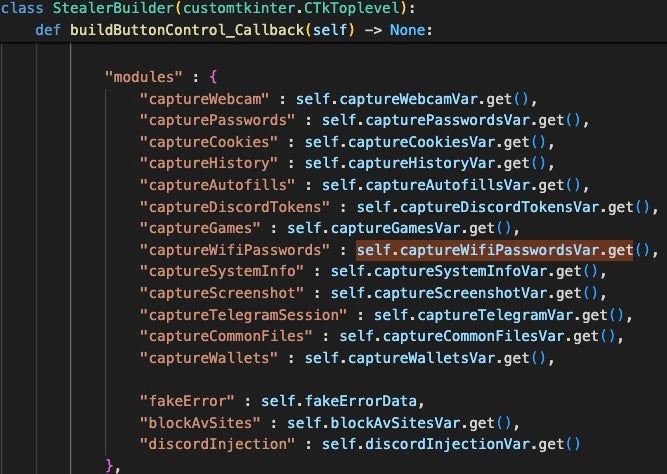
Conclusion
The discovery of Predator AI is an entirely expected evolution that has previously been undocumented in the hacktool space. Since the recent wave of AI technologies entered the public domain, security professionals have questioned whether this technology was already aiding threat actors and how it could be used to scale actor operations. There were several projects like BlackMamba that ultimately were more hype than the tool could deliver. Predator AI is a small step forward in this space: the actor is actively working on making a tool that can utilize AI.
While Predator AI is likely somewhat functional, this integration does not substantially increase an attacker’s capability. The feature has not yet been advertised on the actor’s Telegram channel, and there are likely many edge cases that make it unstable and potentially expensive.
Like other cloud service attack tools, organizations can reduce the impacts from these tools by keeping web services patched and up to date, as well as keeping internet access restricted to what is necessary. Use cloud security posture management (CSPM) tools to validate that configurations are secure. Consider dedicated logging and detections for anomalous behaviors on cloud service provider (CSP) resources, such as new user accounts being added and deletion of another user account immediately after.
Indicators of Compromise
SHA-1 Hash
88d40f86eefee5112515b73cce2d2badb7f49ffd – main.py Predator Python script
Hardcoded Strings
- “jSDSgnditikunggobloktolol” – hardcoded AWS account name string
- “titid” – hardcoded username in AWS GPT functionality
- “Adminn” – hardcoded username in AWS GPT functionality
- “Predator123” – hardcoded password from the Settings class
- “admainkontolpaslodsajijsd21334#1ejeg2shehhe” – hardcoded password for ‘Kontolz’ user account
- arn:aws:iam::320406895696:user/Kontolz – example ARN for Kontolz user
如有侵权请联系:admin#unsafe.sh